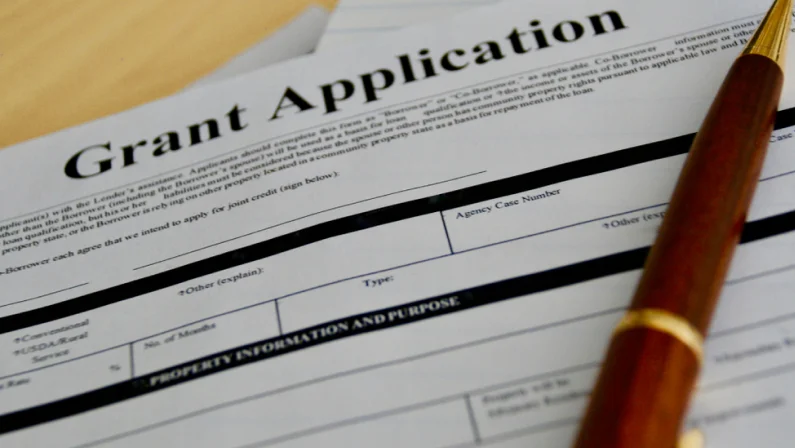If you’re a startup founder or researcher with a groundbreaking idea, but you’re unsure how to fund it, SBIR and STTR programs might be the answer.
These federal funding opportunities provide non-dilutive capital to small businesses engaged in innovative research and development, meaning you don’t have to give away equity to get your idea off the ground.
But how do you even begin applying for SBIR/STTR funding, especially if it’s your first time? The process can feel overwhelming, with strict guidelines, eligibility requirements, and different agencies to navigate.
This guide breaks down everything you need to know as a first-time applicant so you can confidently take the first step toward bringing your research to life.
What Are SBIR and STTR Programs?

The Small Business Innovation Research (SBIR) and Small Business Technology Transfer (STTR) programs are federal initiatives that provide small business innovation research funding to support research and development projects with strong commercialization potential.
SBIR focuses on helping small businesses engage in federal R&D to bring innovative products to market, while STTR requires formal collaboration between small businesses and nonprofit research institutions like universities.
Learning how to apply for SBIR/STTR grants is crucial because both programs aim to stimulate technological innovation, strengthen the role of small businesses in meeting federal research needs, and boost economic growth through innovation.
Who Is Eligible to Apply for SBIR/STTR Funding?
To apply for SBIR or STTR funding, your business must meet specific eligibility criteria set by the federal government. Generally, applicants must be small businesses based in the United States that can demonstrate the capacity to carry out high-level research and development projects.
Additionally, they must fulfill certain ownership, team, and operational requirements to qualify for these competitive grants.
- The business must be a for-profit company with fewer than 500 employees.
- At least 51% of the business must be owned and controlled by U.S. citizens or permanent residents.
- For STTR, the business must formally collaborate with an eligible U.S. research institution such as a university or nonprofit lab.
What Types of Projects Do These Programs Fund?

The SBIR and STTR programs are federal funding programs for small businesses that support a wide range of projects, driving technological innovation and economic growth.
Whether you’re working on groundbreaking research or developing a product ready for market, these programs provide STTR funding opportunities for startups and small businesses across different stages of development.
Understanding the types of projects funded, along with SBIR grant eligibility criteria, can help you tailor your proposal to align with program goals and increase your chances of success.
Early-stage technology research
These programs fund early-stage technology research that explores innovative concepts and solutions. The goal is to generate new knowledge that can eventually lead to practical, marketable applications.
Feasibility studies (Phase I)
Phase I funding focuses on feasibility studies to determine if an idea or technology is viable. It’s essentially the proof-of-concept stage where you validate your approach before advancing to the next phase.
Prototype development (Phase II)
Phase II funding supports prototype development and refinement based on successful Phase I results. This stage helps you build and test your technology in preparation for real-world application and commercialization.
Commercialization-ready innovations
These programs also fund innovations that are ready for commercialization, bridging the gap between R&D and market entry. Funding at this stage ensures technologies are production-ready and meet industry standards.
High-impact scientific breakthroughs
Finally, SBIR and STTR support high-impact scientific breakthroughs that address significant national needs. These projects often lead to transformative solutions with broad economic, social, or health benefits.
How Does the Application Process Work?
The application process for SBIR/STTR funding can seem complex, but it follows a structured pathway. Knowing the steps involved can help you prepare thoroughly and submit a strong, compliant proposal.
- Identify an open funding opportunity from a participating federal agency.
- Prepare and submit a detailed proposal outlining your project, team, and commercialization plan.
- Undergo a rigorous review process to assess technical merit, innovation, and feasibility.
- If awarded, follow the program guidelines for project execution and reporting.
What Are the Key Sections of a Strong SBIR/STTR Proposal?

Applying for SBIR/STTR funding for the first time can be intimidating, and it’s easy to make avoidable mistakes that hurt your chances. Understanding these pitfalls helps you prepare a stronger, more competitive application.
Let’s look at the most common errors first-time applicants make and how you can avoid them to set yourself up for success.
Missing eligibility requirements
One of the biggest mistakes is overlooking basic eligibility requirements. Failing to confirm your business structure, ownership, or team qualifications can disqualify your application before it’s even reviewed.
Submitting incomplete proposals
Submitting incomplete proposals is another common pitfall. Missing required forms, budget details, or supporting documents can lead to automatic rejection, regardless of how innovative your idea is.
Ignoring agency-specific instructions
Each funding agency has specific guidelines and priorities. Ignoring these instructions makes your proposal appear careless and may signal that your project doesn’t align with their mission.
Weak commercialization plans
Many first-time applicants focus only on the technical research and neglect the commercialization plan. Without a clear strategy to bring your innovation to market, reviewers may question your project’s broader impact.
Underestimating time needed to prepare
Finally, underestimating the time needed to prepare your application can be costly. SBIR/STTR proposals are detailed and require careful planning, collaboration, and multiple reviews before submission.
How Can You Improve Your Chances of Winning Funding?
Winning SBIR or STTR funding as a first-time applicant takes more than just a great idea. You need a strong strategy that makes your proposal stand out and shows reviewers your project’s potential for success and impact.
Here are practical ways to strengthen your application and improve your chances of securing this competitive funding.
1. Write a clear, detailed proposal
Ensure your proposal clearly explains your project’s goals, methods, and expected outcomes. Reviewers should easily understand what you plan to achieve and how you’ll get there.
2. Align your project with agency priorities
Research the specific agency’s mission and current funding focus. Tailor your proposal to demonstrate how your project supports their goals and addresses key challenges they prioritize.
3. Build strong research partnerships
Partnering with universities or research institutions strengthens your team’s expertise. It also shows reviewers that your project has access to resources and credibility to succeed.
4. Use available training and webinars
Many agencies offer free training, webinars, and resources for first-time applicants. These sessions provide insights on proposal preparation, compliance, and what reviewers look for.
5. Review past awarded proposals
Studying previously funded proposals helps you understand what works. Analyze their structure, clarity, and how they effectively communicated innovation and commercialization potential.
Where Can You Get Help with Your Application?
Navigating the SBIR/STTR application process can be challenging, but you don’t have to do it alone. Many universities have dedicated small business development centers or innovation offices to assist you.
Additionally, agencies like the SBA, state economic development offices, and nonprofit organizations offer free resources, mentorship, and proposal review support. Engaging with these programs early can significantly improve your application quality and confidence.
Secure Funding and Drive Innovation
Securing SBIR or STTR funding can transform your research idea into a successful, market-ready product. With careful planning, strategic partnerships, and the right guidance, first-time applicants can navigate this competitive process with confidence.
If you want tailored support for your funding and growth goals, partnering with an economic development consultant can make all the difference. LSI is the leading services provider if you are in need of economic development strategies, proposal assistance, and commercialization planning to drive your business forward.
Ready to take your innovation to the next level? Connect with LSI, your trusted economic development consultant, and unlock funding opportunities for your business today.





